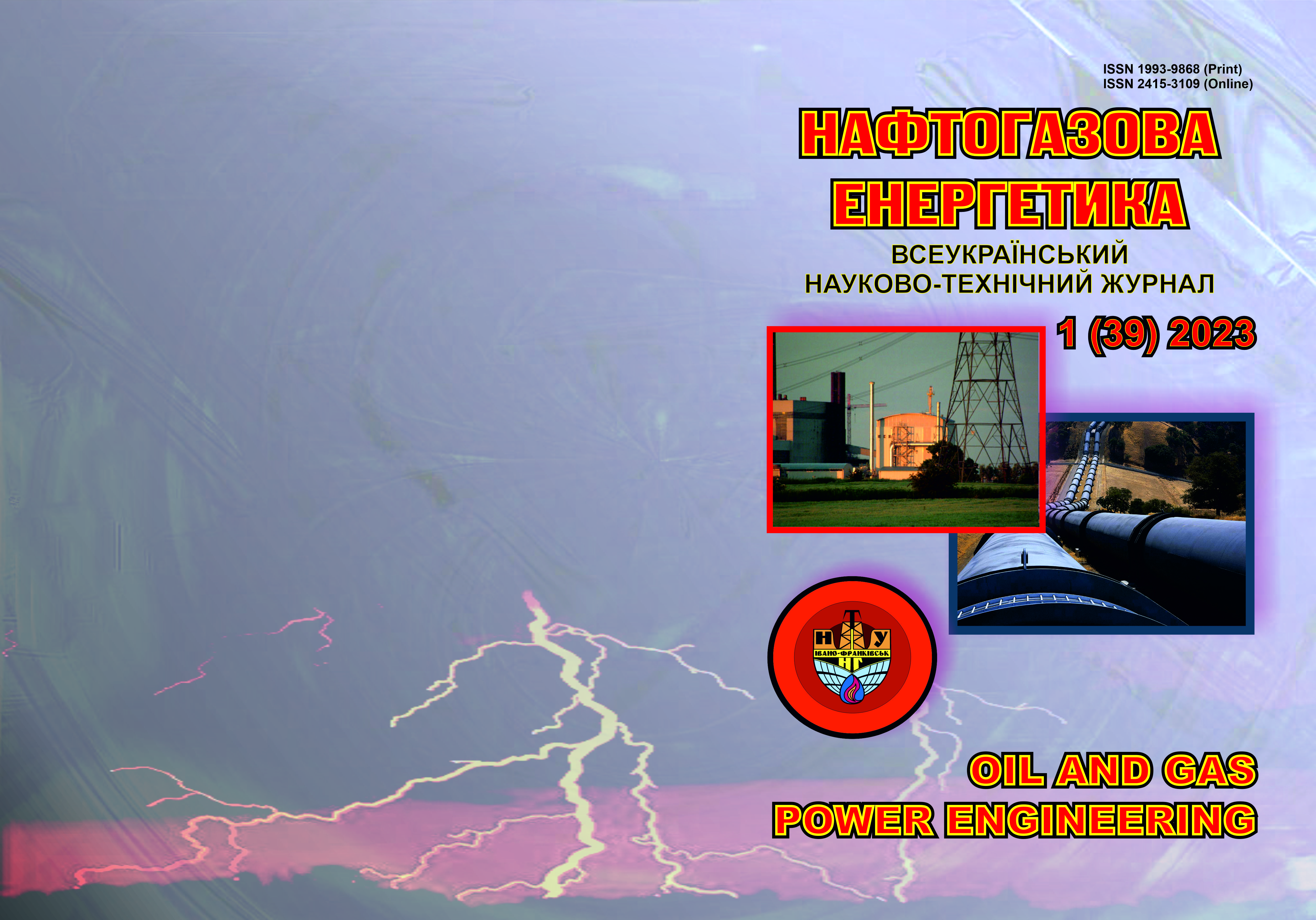EXPERIMENTAL STUDIES OF COMBUSTION PROCESSES OF STEAM-DIESEL MIXTURE IN BOILERS OF MOBILE STEAM GENERATOR INSTALLATIONS
DOI:
https://doi.org/10.31471/1993-9868-2023-1(39)-50-62Keywords:
mobile vapor generator unit, vapor-diesel mixture, amount of heat, fuel consumption.Abstract
The article aims to reduce fuel consumption in boilers of mobile vapor generating units of the oil and gas industry due to using vapor-diesel mixtures as fuel which are a cheaper and more environmentally friendly alternative to diesel fuel. Theoretical studies of physicochemical processes during the combustion of vapor-diesel mixture in boilers of mobile vapor generators were carried out. Assumptions of the mathematical model of combustion of vapor-diesel mixture in boilers of mobile vapor generators were formulated. The mathematical model of vapor-diesel mixture combustion in boilers of mobile vapor generators was created. The calculations showed that the thermal effect of burning a vapor-diesel mixture exceeds the effect of burning the same amount of diesel fuel. The use of vapor-diesel mixtures allows for to reduction of the contamination of heating surfaces in boilers with soot. The combustion speed of the vapor-diesel mixture is greater than that of commercial diesel fuel, and the indicator pressure during the combustion of the vapor-diesel mixture increases. Calculations of diesel fuel consumption by PPUA vapor generator units at different modes were carried out. To confirm theoretical studies in industrial conditions, experimental studies of the main patterns of changes in the fuel-economical characteristics of mobile vapor generator units PPUA-1600/100 and PPUA-1200/100 were carried out. Fuel consumption was determined per hour of operation of vapor generating units at constant conditions of pressure P, temperature t and degree of dryness of saturated steam x. The conducted experimental studies showed that the transfer of boilers of mobile vapor generators to work using products of a vapor-diesel mixture was accompanied by a decrease in fuel consump- tion during the operation of boilers, and therefore is technically justified. The use of pre-diesel mixtures made it possible to increase the thermal efficiency of boilers of mobile vapor generators for various modes and reduce diesel fuel consumption by 8-14 %.
Downloads
References
Hasannuddin A. K., Wira J. Y., Sarah S., Aqma W. W. S., Hadi A. A., Hirofumi N., Azrin M. A. Performance, emissions and lubricant oil analysis of diesel engine running on emulsion fuel. Energy conversion and management. 2016. 117. P. 548-557.
Wamankar A. K., & Murugan S. Combus- tion, performance and emission characteristics of a diesel engine with internal jet piston using carbon black-water-diesel emulsion. Energy. 2015. No 91, P. 1030-1037.
De Giorgi M. G., Fontanarosa D., Ficarella A., Pescini E. Effects on performance, combustion and pollutants of water emulsified fuel in an aeroengine combustor. Applied Energy. 2020. No 260, P. 114263.
Niszczota P., Gieras M. Impact of the ap- plication of fuel and water emulsion on CO and NOx emission and fuel consumption in a miniature gas turbine. Energies. 2021. No 14(8), P. 2224.
Sartomo A., Santoso B., Muraza O. Recent progress on mixing technology for water-emulsion fuel: A review. Energy Conversion and Manage- ment. 2020. No 213, P. 112817.
Yahaya Khan M., Abdul Karim Z. A., Ha- gos F. Y., Aziz A. R. A., Tan I. M. Current trends in water-in-diesel emulsion as a fuel. The Scientific world journal. 2014. No 16(3). P. 567.
Patil H., Gadhave A., Mane S., Waghmare J. Analyzing the stability of the water-in-diesel fuel emulsion. Journal of Dispersion Science and Technology. 2015. No 36(9). P. 1221-1227.
Mondal P. K., Mandal B. K. Experimental investigation on the combustion, performance and emission characteristics of a diesel engine using water emulsified diesel prepared by ultrasoni- cation. Journal of the Brazilian Society of Mechan- ical Sciences and Engineering. 2018. No.40. P. 1-17.
Jhalani A., Sharma D., Soni S. L., Sharma P. K., Sharma S. A comprehensive review on wa- ter-emulsified diesel fuel: chemistry, engine performance and exhaust emissions. Environmental Science and Pollution Research, 2019. No 26. P. 4570-4587.
Shinjo J., Xia J., Ganippa L. C., Megaritis A. Physics of puffing and microexplosion of emul- sion fuel droplets. Physics of Fluids, 2014. No 26(10), P. 103302.
Rodzewicz, R., & Gieras, M. Numerical investigation of heat transfer in fuel-water emulsion droplet. Arch. Combus. 2018. No 38, P. 1-10.
Moussa O., Tarlet D., Massoli P., Bellettre J. Investigation on the conditions leading to the micro-explosion of emulsified fuel droplet using two colors LIF method. Experimental Thermal and Fluid Science. 2020. No 116. P. 110106.
Kerivnytstvo z ekspluatatsii К35.00.00.000 PE «Ustanovka peresuvna promyslova parova PPUA-1600/100. JSC Nalchinskyi mashyno- budivnyi zavod. 2017. [in Ukrainian]
Sazhin S. S., Rybdylova O., Crua C., Heikal M., Ismael M. A., Nissar Z., Aziz A. R. B. A simple model for puffing/micro-explosions in water-fuel emulsion droplets. International Journal of Heat and Mass Transfer. 2019. No 131. P. 815-821.
Downloads
Published
How to Cite
Issue
Section
License
Copyright (c) 2023 Oil and Gas Power Engineering

This work is licensed under a Creative Commons Attribution-ShareAlike 4.0 International License.


.png)






1.png)









